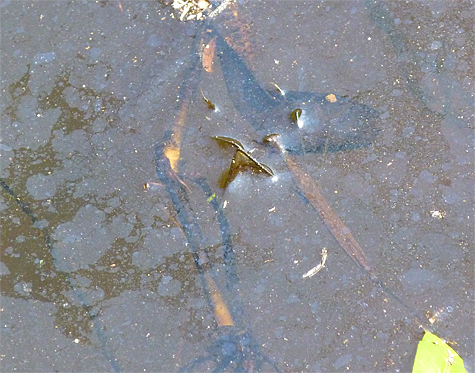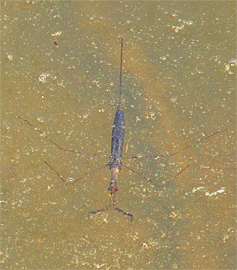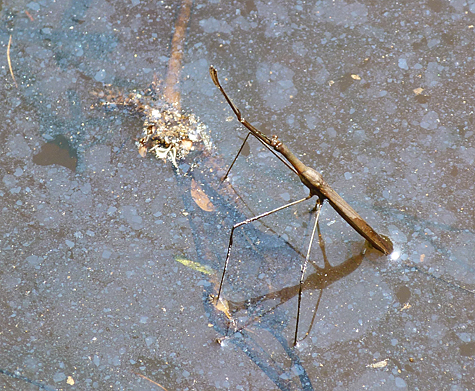A few weeks ago I was standing on the boardwalk leading to the Wetlands Overlook staring down at the water below me. I noticed something moving very slowly just below the water’s surface. It looked like a walking stick. It could only be one thing, a Water Scorpion (Ranatra fusca).


Water Scorpions are not scorpions, they’re aquatic insects. They’re called scorpions because of a whip-like projection at the rear of their bodies. The projection, which is nearly the length of the insect’s body, is actually two halves of a breathing tube or snorkel that, when pulled together is raised to the surface of the water enabling the insect to breath while lying in wait for prey beneath the surface. The insect looks more like a cross between a walking stick and preying mantis than it does a scorpion.
As I watched the insect in the water below me, it began to emerge from the water. Very slowly, it inched out of the water exposing its long slender body to the air. I know that these insects have wings (that’s how they arrived in the Wetlands) but I’ve never seen one fly before. The insect that I was watching was preparing to take flight. What else could it be doing, slowly raising itself above the water presumably to dry out before taking off.

Just then, a call came over the radio, I was needed somewhere else. I wasn’t going to see this water bug take off into the wild blue yonder after all. Oh well. This behavior must happen everyday in wetlands across the country, I’ll probably see it again. I’ve been here at the Museum for over four years (nearly five) and gaze down into the water of the Wetlands every day, so I’m bound to come across another water scorpion making flight preps, sooner or later.
Darn! We keep some in the insectarium aquarium and I’ve never even seen one surface. It’s so exciting to see a new behavior in a familiar insect. One of these days the Rhino Beetle is gonna take off when I have him out–it’s gonna be awesome!
I would love to see that beetle take flight!